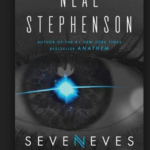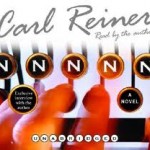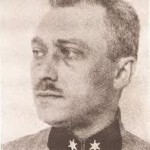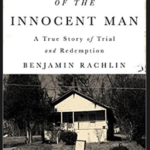April 25th, 2014 — 11:42pm
 Fifty Shades of Grey by E.L, James|
Fifty Shades of Grey by E.L, James|
By the time I got around to reading this book it had sold 100 million copies in 52 languages. It was a hot best seller from the moment it burst on the scene selling 2 million copies during its first month out. The story is simple and somewhat repetitious with a thin plot. Anastasia Steele 21 year old attractive, virgin college girl with very limited sexual experience pinch-hits for her roommate who is on the college newspaper and interviews the scheduled graduation speaker. He is Christian Grey, an incredibly handsome and rich 27 year old, very successful businessman. He is obviously taken with her. He tracks her down and they begin to establish a relationship. She is very attracted to him and one might expect that we would have two people doing what comes naturally. The catch here is while he is very proficient in deflowering this girl and satisfying her sexually, he has special needs. These needs involve acting out his sadomasochistic fantasies where he is the Dominant and she is the Submissive. This involves restraining her, tying her, flogging her and much more. He has a great need to possess her. Where he differs from the individual with a sadomasochistic disorder is that he only wants to carry this out with a consenting woman and he even offers her a detailed contract where all the details and so called limits are spelled out. As they continue to interact sexually and as she contemplates if she will sign this contract, she falls in love with him and wants to please him. She hopes he will love her more than his perverse sexual needs dictate. Needless to say the book is rich in the detail of their sexual interaction. It is clearly written from a women’s point of view. Ana’s arousal is traced in great detail and her orgasms are vividly described in somewhat repetitive language. There can be no doubt that the mass appeal of this book which surely has to be mainly to women comes from the wishful identification with the experience of the main female character. It is not a stretch to understand how appealing it is for a woman to imagine a wealthy, extremely good-looking man who buys her expensive gifts and is immensely attracted to her. There can be multiple components to a woman’s sexual fantasies. One of them could be to be dominated by a desirable man. This storyline tests the limit of that fantasy. While I call this a woman’s book I am sure that I am not the only man who read it. It is part of the common male phantasy to want to dominate an extremely attractive girl, but the extent of Christian Grey’s needs could only have developed by special circumstances. (Remember Dustin Hoffman’s character in The Graduate and his relationship with Mrs. Robinson?) While the roots of these determining factors were clearly discussed in the book, they were not fully expounded upon. Perhaps these are being elaborated in more detail in the newer books of the now “trilogy” which the author has written. I will probably pass on the next two books but I have no doubt they will sell well and ultimately produce a movie which I might just take in.
Comment » | FR - Fiction Romance
April 6th, 2014 — 10:03pm
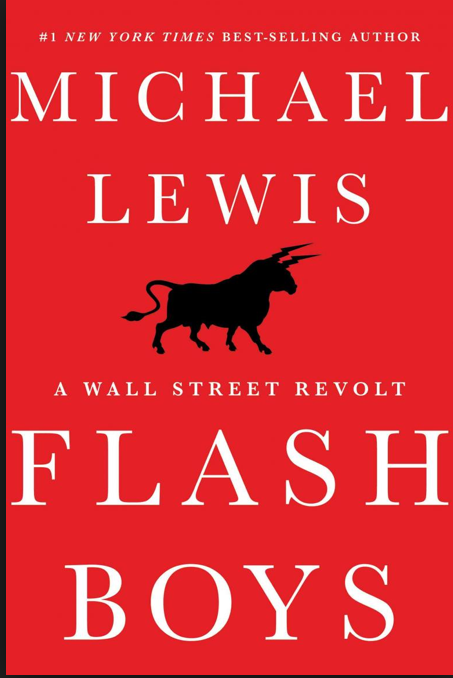 Flash Boys by Michael Lewis- This book is causing both great interest and high emotion on Wall Street since its recent release. The author, Michael Lewis, has great credentials as a reliable reporter, which he has demonstrated in several important books including best sellers Moneyball and Liar’s Poker. This book mesmerized me but to be perfectly honest, most of the time I did not understand what the author was talking about especially when he was explaining the exact details of how electronic trading really works. Apparently, according to the author, most of the traders on Wall Street also really don’t know what goes on behind the computer screen. However, that is exactly what this book is all about.
Flash Boys by Michael Lewis- This book is causing both great interest and high emotion on Wall Street since its recent release. The author, Michael Lewis, has great credentials as a reliable reporter, which he has demonstrated in several important books including best sellers Moneyball and Liar’s Poker. This book mesmerized me but to be perfectly honest, most of the time I did not understand what the author was talking about especially when he was explaining the exact details of how electronic trading really works. Apparently, according to the author, most of the traders on Wall Street also really don’t know what goes on behind the computer screen. However, that is exactly what this book is all about.
Early in the book the reader learns that millions of dollars are being spent to lay a black tube filled with fiberglass cable from Chicago to New Jersey and to make it as straight as possible. This will allow electronic signals that carry information between brokerage houses and the various stock exchanges to flow as fast as possible. One of the goals of this project is to let the people who sign up to use it be faster than all the other guys who don’t use it. However, that is not the whole story. We also learn that some brokerage firms spend lots of money to move their computer servers closer to the main stock exchange buildings in New York and New Jersey in order to shorten the travel time of the electronic messages. We are talking about increasing their speed by thousandths of a second, faster than the blink of an eye. With or without new cable there are all sorts or tricks or techniques to manipulate the speed and timing of the electronic impulses, which convey information involved in buying and selling stock. Certainly, speed really counts but things are even more complicated. Stock traders who do a lot of trades called High Frequency Traders (HFT) have special computer programs that have tricky computer maneuvers. For example, if they have a 10,000-share order they will send out a signal for an order of 100 shares. This allows the computer to figure out the current selling price and then the computer in blinding fast speed sends the rest of the order to various other exchanges and ends up making purchases a fraction of a cent better than if they didn’t have this super speed ability. It gets even more complicated as there are all sorts of commissions and bonuses per share that depend where and when the sale is made. Oh, also there are “dark pools” which are locations in cyberspace where various brokerage firms will make trades from their own clients without routing orders to the various exchanges. This saves money but doesn’t necessarily get the best price for the customers. There are 13 public stock exchanges (NY Stock Exchange, American Stock Exchange, NASDEQ and 10 more) plus 45 dark pools.
If this were just a book about computer programing and the ins and outs of the market, I would have given up on it early on. There also is a human side of this story, which is about some of the so called computer geeks that work designing these systems and making them work, as well as some of the higher ups who run the various brokerage and stock exchanges. It should be noted that many of these people earn hundreds of thousands of dollars per year and some make a few million dollars per year and those at the very top make much more. There are some heroes in this book. One in particular will be mentioned. His name is Brad Katsayama. He and a few colleagues figured out that super speed trading gives certain brokers an unfair advantage. Initially they designed a program to make the information from a trade arrive evenly at the same speed. (Needless to say this is a simplified explanation). They believed that this made for fairer business transactions. Then after many machinations they brought together a team that was dedicated to build their own stock exchange. The purpose would be to run super speed trading that would give no special advantage and no one would get special bonuses or commissions for tricky manipulations in how a block of stock was transacted in their stock exchange, which is named IEX (Investors Exchange). There were some very exciting moments as they built the exchange and waited with baited breath on the opening day to see if it would work and attract what they believed would be fair minded traders. Spoiler Alert! Goldman Sacks led the way and ultimately other firms would follow and IEX became a successful endeavor.
Lest you think that Goldman sacks is presented as one of the heroes of this book, there is a very scary situation described in the book where a man
by the name of Sergey Aleynkove is harshly sentenced to 8 years in jail for “stealing” computer code from them. He was one of those geeks who appeared to be more interested in the intricacies of the electronic trading than getting around the laws and regulations. The explanation for what he did that was shown to us was that while at Goldman Sachs he sent himself emails of the code he was working on which he kept when he left the firm. Most of what he used was open code that meant that it was available to anyone for free on the Internet and the rest of it wasn’t really usable outside of Goldman Sacks. Nevertheless they pressed charges and he was convicted. We are led to believe this is about the paranoid atmosphere when the secret world of electronic trading is being exposed.
The impression that Michael Lewis leaves us with this book is that stock market trading is mostly rigged and there is manipulation, skimming and deception. While there has been a genuine growth from which most investors profit in the long run, the everyday details are dark and dirty. They are also very difficult to understand. They are embedded in the nano second impulses that flash back and forth in the hands of the people who run our financial markets.
Comment » | E- Economic, P - Political
April 2nd, 2014 — 8:09pm
Havana Nocturne by T.J. English– 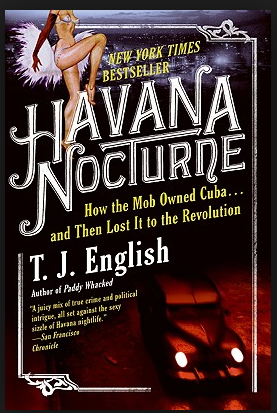 I thought that I was a little familiar with the history Cuba. I knew that Spain won its freedom from Spain in the Spanish American War. I knew that during the reign of the Cuban dictator Fulgencio Batista the United States and large U.S. corporations had a good deal and made lots of money from Cuba. I was aware in 1959 Fidel Castro and his revolutionary army basically took over the country, nationalized US companies and threw out the Americans as well as many wealthy Cubans. They established a more or less socialistic economy as Batista escaped in exile. I also had a vague awareness that prior to the revolution Havana was a very exciting city with lots of nightclubs run largely by gangsters similar to stories I heard about Las Vegas.
I thought that I was a little familiar with the history Cuba. I knew that Spain won its freedom from Spain in the Spanish American War. I knew that during the reign of the Cuban dictator Fulgencio Batista the United States and large U.S. corporations had a good deal and made lots of money from Cuba. I was aware in 1959 Fidel Castro and his revolutionary army basically took over the country, nationalized US companies and threw out the Americans as well as many wealthy Cubans. They established a more or less socialistic economy as Batista escaped in exile. I also had a vague awareness that prior to the revolution Havana was a very exciting city with lots of nightclubs run largely by gangsters similar to stories I heard about Las Vegas.
This book written by an American journalist T. J. English fills in the details about Batista, Castro and especially the very personal story of the mafia, the mob or the gangsters who in a very deliberate manner conquered the economy of this country and ruled it’s jeweled city of Havana for almost seven years. I am ashamed to admit that prior to reading this book, I had considered that there must have been some redeeming value in Batista, if the U. S. including Presidents Eisenhower and JFK had strongly supported him However, after learning about the suitcases of money that were delivered to Batista in exchange for letting the gangsters take over Havana, I was quite surprised and disappointed.
The Cuban revolution is only a small part of this story that is told in great details (with much documentation and cross referencing in the appendix at the end of the book as if that were really needed.) This book chronicles the life of gangsters, Charles Lucky Luciano and most of all Meyer Lansky. There are fascinating behind the scenes details of historical events that most of us would never have known. We learn that Lucky Luciano might have lived most of his adult life in prison if there was not a deal made with the United States Navy who had a need to catch Nazi sabatours who were operating on the NY and Brooklyn docks where Luciano had the ability to ferret out their identities. This earned him an out of jail ticket and deportation to Italy from where he then traveled to Cuba.
On the other hand, the descriptions of the life and successful business doings of Mr. Lanksy would have to be of interest, and perhaps envy of every Harvard Business School graduate although we would hope they not follow in his unscrupulous side. Lansky knew how to involve his business associates with a piece of the action so for the most part they would be content with hardly a necessary mob hit (although there were certainly a few of them described in the book). In fact, there were the inside details of some of the biggest gangster hits of all time including the notorious Albert Anastasia
The life styles and personalities of several mobsters are describes in detail as there was a quite a large number of them who came to Cuba to seek their fortunes. Particularly prominent along with Luciano and Lanksy was Santos Trafficante Jr. who in addition to having his hooks in Havana controlled activities in Tampa, Florida. Their backgrounds, personalities and relationships with each other are all dissected. For the most part their motive was clear, money-lots of it. They saw Cuba, as a fertile field for exploiting. Havana was an immensely attractive playground for he rich as well as the wannabee rich, all who were drawn to this glamorous city. There also was an account of Frank Sinatra’s acquaintance with the mob and there even was a story about something like an orgy in which a young US Senator JFK was a participant.
English’s writing style is relatively straightforward. The references are in the back of the book but the sequences of events and cast of characters were clearly rolled out as was the various nefarious schemes. At times English would throw in a colorful metaphor such as. “ Throughout the month of December, the island seethed like a bitch with a low grade fever.” Perhaps the only thing that was not clear to me is why the influence of the exiled Cubans mostly concentrated in Florida, to this day continues to prevent the US from lifting the Cuban embargo and developing a reasonable relationship with the Cuban people. Now that Castro himself is in his waning days and island itself as we observed during a recent trip is experimenting with various forms of capitalism, it may be a short time before that occurs. It will be interesting to see when that happens if the mob will creep back into Havana in the dead of night.
Comment » | HI - History, P - Political
 Fifty Shades of Grey by E.L, James|
Fifty Shades of Grey by E.L, James|
